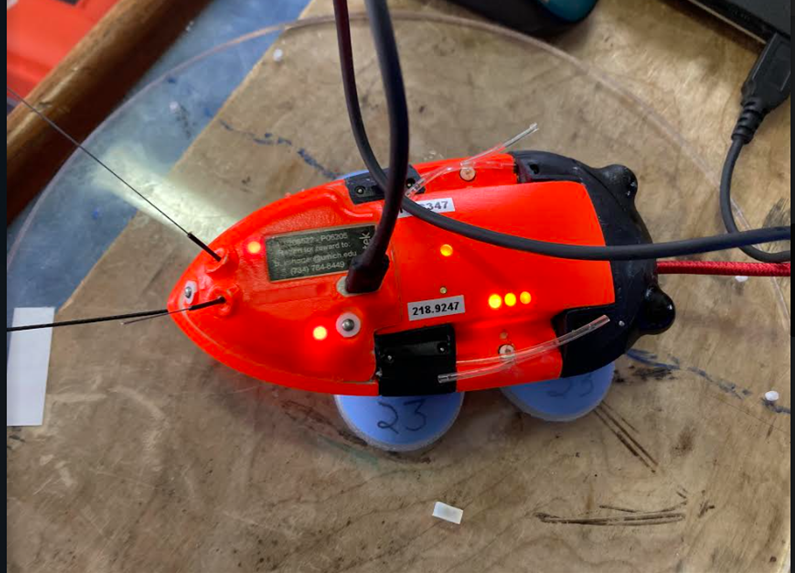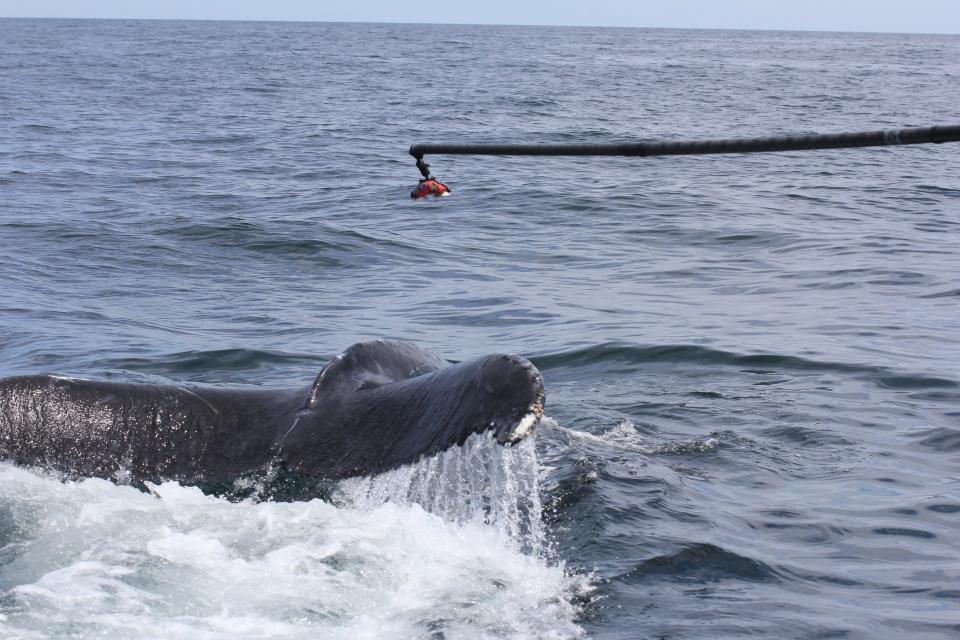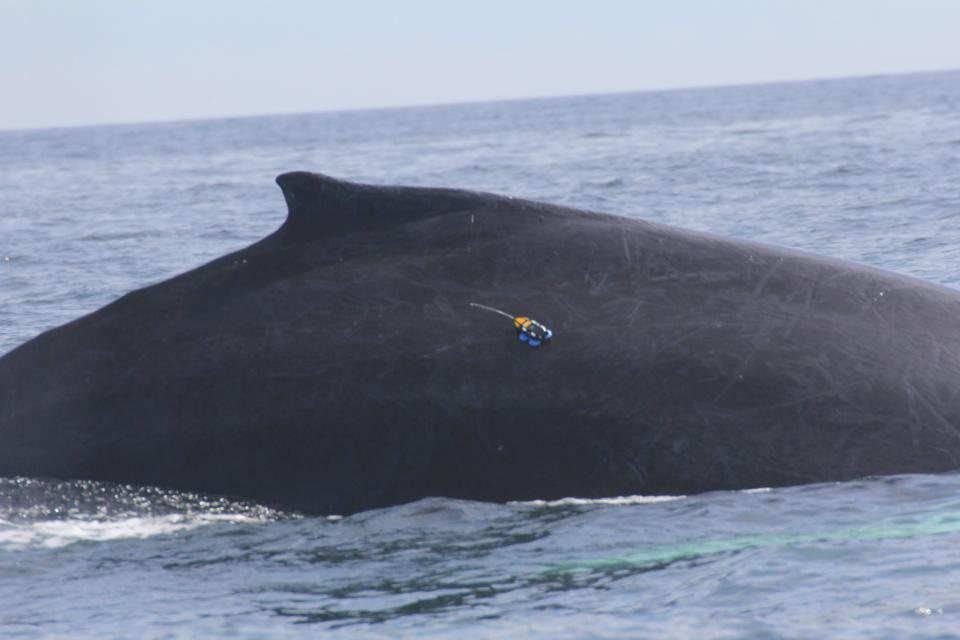Scientists ask South Shore to help find tracking tag once attached to endangered whale
SCITUATE – Federal scientists are asking the public to help them find a tracking tag that was attached to an endangered sei whale before it washed ashore, possibly on Long Beach in Plymouth.
The tag is bright orange, the size of a palm, and it could still have blue suction cupsattached at the bottom. Depending on how damaged it is, there might be two antenna at the front.
Tammy Silva, a Stellwagen Bank National Marine Sanctuary marine scientist, said researchers recovered 13 other tags, but this one has eluded them.
Once it was lost, they asked the Coast Guard to do a drift analysis, which indicated Long Beach in Plymouth as a potential location, although it could have washed ashore farther north.

The tag should have washed ashore by now, she said.
If anyone finds the tag, researchers are asking them to email stellwagen@noaa.gov.
Silva said drones drop the tags on the whales while the drone pilots are farther away on a boat.
Sei whales are endangered, but little is known about them because they have not been as widely studied as other species. The tagging project was the first of its kind for them, Silva said.

The sei whale is long, slender and streamlined. At 50 to 60 feet, it is bigger than a humpback whale. It can skim-feed like a right whale, but also lunge-feed like a humpback, Silva said.
'I was completely inside': Lobster diver swallowed by humpback whale off Provincetown
The tags recorded hundreds of hours worth of data, including how they behave during the day and night. Although researchers are just beginning to dive into the data, it appears the whales are spending lots of time at the surface, Silva said.
The tags can monitor how deep a whale dives and if it's rolling or upside down, and can record the whales and their surroundings. Part of the program was intended to see what effect offshore wind turbines have on the whales, and if the noise they make affects how whales communicate.
A few of the tags even recorded a whale's-eye view of events, which, if it's light enough, should give researchers the ability to see what the whales see and what they're doing in the water, Silva said.

"We hope to use it to help sei whale conservation, see what threats there are to them, understand their underwater behavior and how that overlaps with human activity and use it for conservation applications," she said.
Thanks to our subscribers, who help make this coverage possible. If you are not a subscriber, please consider supporting quality local journalism with a Patriot Ledger subscription. Here's our latest offer.
Reach reporter Wheeler Cowperthwaite at wcowperthwaite@patriotledger.com.
This article originally appeared on The Patriot Ledger: Researchers ask for help finding missing sei whale tag in Plymouth

